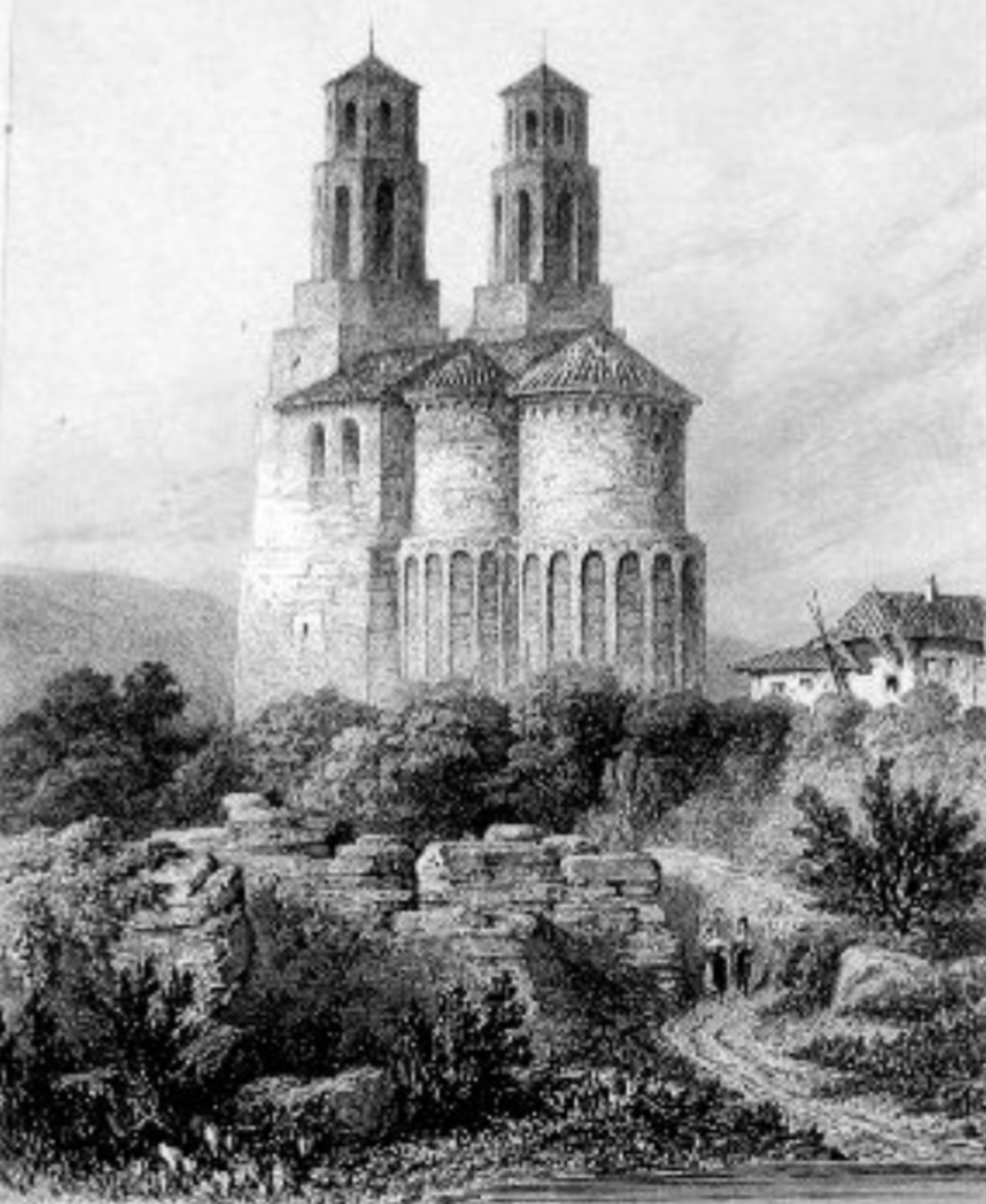Church Of The Virgin Mary, Galați on:
[Wikipedia]
[Google]
[Amazon]

 The Church of the Virgin Mary ( ro, Biserica Sfânta Precista) is a Romanian Orthodox church located at 2 Roșiori Street in
The Church of the Virgin Mary ( ro, Biserica Sfânta Precista) is a Romanian Orthodox church located at 2 Roșiori Street in Lista Monumentelor Istorice 2010: Județul Galați
“Blestemul Jupânesei Dragolea”
in ''Danubius'', vol. XXXV, part 2/2017, pp. 7-19 {{coord, 45.42943, 28.053149, format=dms, type:landmark_region:RO, display=title Buildings and structures in Galați Historic monuments in Galați County Romanian Orthodox churches in Romania Churches completed in 1647 Fortified church buildings in Romania Former Christian monasteries in Romania History museums in Romania Art museums and galleries in Romania Defunct museums in Romania Museums established in 1971 Museums disestablished in 1990

 The Church of the Virgin Mary ( ro, Biserica Sfânta Precista) is a Romanian Orthodox church located at 2 Roșiori Street in
The Church of the Virgin Mary ( ro, Biserica Sfânta Precista) is a Romanian Orthodox church located at 2 Roșiori Street in Galați
Galați (, , ; also known by other alternative names) is the capital city of Galați County in the historical region of Western Moldavia, in eastern Romania. Galați is a port town on the Danube River. It has been the only port for the most par ...
, Romania. It is dedicated to the Dormition of the Mother of God.
The church was dedicated in the autumn of 1647. Located on the left bank of the Danube, it was originally a monastery, built on the site of an earlier church with the same name. Conceived as a fortress, it was built by workers brought from Transylvania. Its ''ktitor
''Ktetor'' ( el, κτήτωρ) or ''ktitor'' (; ka, ქტიტორი ''kt’it’ori''; ro, ctitor), meaning "founder", is a title given in the Middle Ages to the provider of funds for construction or reconstruction of an Eastern Orthodox ch ...
s'' were the Brăila
Brăila (, also , ) is a city in Muntenia, eastern Romania, a port on the Danube and the capital of Brăila County. The ''Sud-Est'' Regional Development Agency is located in Brăila.
According to the 2011 Romanian census there were 180,302 pe ...
merchants Die and Șerbu, as well as the local trader Constantin Teodor. From the beginning, it was placed under the protection of the Athonite Vatopedi Monastery
The Holy and Great Monastery of Vatopedi ( el, Βατοπέδι, ) is an Eastern Orthodox monastery on Mount Athos, Greece. The monastery was expanded several times during its history, particularly during the Byzantine period and in the 18th an ...
. While visiting in 1653, Paul of Aleppo noted its presence.Drăgoi and Marinescu, pp. 8-9
Over the ensuing two centuries, wars and robbers led to the church’s deterioration, such that by 1885, Bishop Melchisedec Ștefănescu
Melchisedec Ștefănescu (; born Mihail Ștefănescu ; – ) was a Moldavian, later Romanian historian and bishop of the Romanian Orthodox Church. A native of the Piatra Neamț area, he was educated at Iași and in Kiev. After a decade of teachi ...
, who had earlier served in Galați, wrote: “Today, the Precista Monastery has completely lost the appearance of a fortress. It has neither the surrounding wall, nor the magnificent bell tower, nor the three spires described by Paul of Aleppo, but only two. The Turks burned and looted it many times and turned it into a customs office, where they deposited the products they gathered from around the country, before taking them to Constantinople.”
The church owes its current appearance to the thorough consolidation and renovation work that took place in 1954–1957. The communist regime converted the church into a museum of feudal history and art during 1970, opening the following year. This closed in 1990, after the Romanian Revolution. At that point, the building became a parish church, and was rededicated in 1994.
The church is listed as a historic monument by Romania's Ministry of Culture and Religious Affairs.Notes
References
*Eugen Drăgoi, Florin Marinescu“Blestemul Jupânesei Dragolea”
in ''Danubius'', vol. XXXV, part 2/2017, pp. 7-19 {{coord, 45.42943, 28.053149, format=dms, type:landmark_region:RO, display=title Buildings and structures in Galați Historic monuments in Galați County Romanian Orthodox churches in Romania Churches completed in 1647 Fortified church buildings in Romania Former Christian monasteries in Romania History museums in Romania Art museums and galleries in Romania Defunct museums in Romania Museums established in 1971 Museums disestablished in 1990